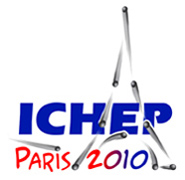Speaker
Prof.
Carter Hall
(University of Maryland)
Description
Cosmological and astrophysical measurements indicate that our galaxy is filled with a new type of matter previously unknown to physics. This "dark matter" apparently has no electromagnetic or strong interactions, but an interaction of the strength of the weak nuclear force is strongly suggested by the data. The LUX collaboration is attempting to detect the faint signature of weakly interacting dark matter as it passes through the earth. The experiment searches for recoiling atomic nuclei in a target consisting of 350 kg of liquefied xenon. LUX is the largest experiment of its type ever attempted, and it is expected to improve upon current experimental sensitivities by two orders of magnitude. The experiment is being assembled at the Sanford Underground Science and Engineering Laboratory (SUSEL) in Lead, South Dakota, USA, and first data is expected in 2011. We report on the status of LUX and the prospects for future large-scale dark matter searches with liquid xenon.
Author
Prof.
Carter Hall
(University of Maryland)
